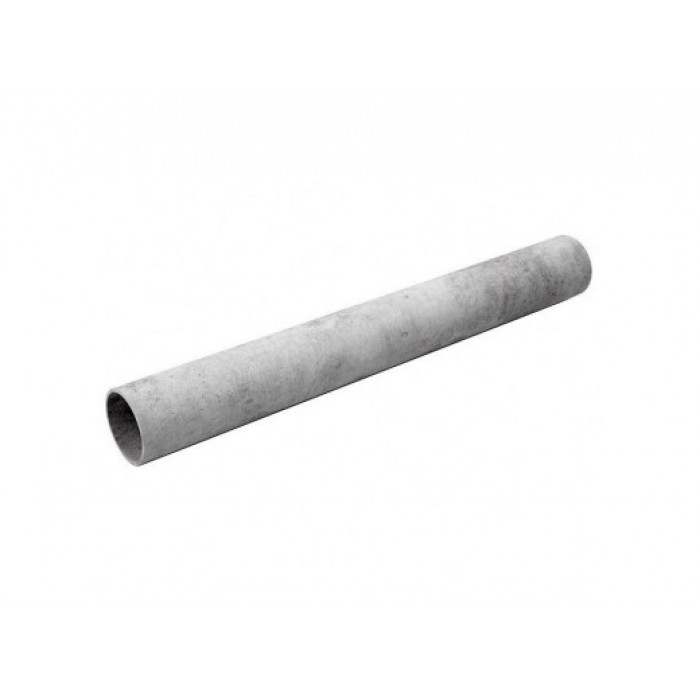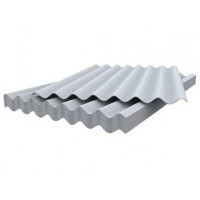Dnieper asbestos-cement pipe 100, 150, 200, 250, 300, 400, 500 VT9, VT6, couplings, rings
Asbestos pipes are made from two main components, which are Portland cement and asbestos fiber. Water is used to obtain a homogeneous consistency. The use of these materials makes it possible to obtain as a result a material that is light in weight and has a low thermal conductivity. Asbestos cement is a cement mortar reinforced with asbestos fibers. Asbestos goes through a grinding process to a powdery consistency, after which it is divided into fibers. It is these fibers that are the link in the concrete mix.
The strength of asbestos pipes is obtained by reinforcing concrete with asbestos fiber. This allows you to increase the strength by 40% compared to conventional concrete devices.
A significant advantage of asbestos is its low thermal conductivity. It is due to the low thermal conductivity that asbestos pipes are used for arranging sewer pipelines with high freezing rates. A significant advantage of asbestos pipes is the absence of properties of susceptibility to electrocorrosion. If the service life of metal pipelines, in which the phenomenon of stray currents is observed, is reduced to 4-5 years, then asbestos pipes with such a negative effect can last ten times longer.
When choosing asbestos pipes, it is important to take into account such parameters as the diameter and length of the products. The products under consideration are of two types: pressure or non-pressure. Below is a table with technical parameters for pressure and non-pressure asbestos pipes.
Asbestos-cement pipes are used in various areas:
for laying sewers,
provision of technical water supply,
installation of drainage and storm systems,
as casing pipes for water wells,
to create chimneys,
for the formation of columnar foundations.
Also, asbestos-cement pipes are used as a protective channel for laying electrical networks, telephone and Internet cables, and so on.
Asbestos-cement pipes are usually used for laying straight pipelines, since the material is quite fragile and the use of a / c tees and corners is irrational.
We recommend that you read: Purpose and properties of PVC rigid pipes
Fragility is due to the fact that during rotation in the centrifuge, asbestos fibers are randomly located in the product. For a solid pipe, this does not matter, however, for shaped products it is critical.
If it is necessary to turn or branch the pipeline, cast-iron shaped products are used. When working with small diameters, the use of products made of polymers is acceptable.
The advantages of asbestos-cement pipes include:
immunity to moisture, anti-corrosion properties (can be laid directly in the ground without additional protection, even in conditions of high humidity);
resistance to stray currents (in underground pipelines), since the material is a dielectric;
the smallest coefficient of linear expansion compared to all other materials from which they are made;
fire resistance (asbestos cement does not burn, and melting begins at temperatures above 1500 ºС);
the material also withstands low temperatures characteristic of the northern climate;
the heat loss coefficient is lower than that of metal products;
the inner walls of the product have an absolutely smooth surface, due to which there is no risk of “overgrowing” of the pipe, and the level of resistance of moving media is also reduced;
a / c pipes are very easy to install and do not require special equipment;
the immunity of asbestos cement to external influences and chemical inertness ensure a long service life;
the cost of a / c products is lower than the price of metal ones.
Asbestos-cement pressure pipes should not have delaminations, breaks or cracks. Their ends require turning. For products whose length is 2950 and 3950 millimeters, the deviation from straightness cannot exceed 12 mm; 5 thousand mm - 18 mm; 5 thousand 950 mm - 24 mm. An important parameter of such pipes should be water tightness.
All requirements for the production and quality of asbestos-cement products, regulated by GOSTs, are as follows:
internal and external dimensions of asbestos pipes must comply with state standards for such products 539-80;
test tests of asbestos-cement pipes and methods for their implementation are carried out in accordance with GOST 11310-90.
Since in the USSR asbestos-cement pipes according to GOST were used only for the construction of reclamation canals, their scope was extremely limited. That is, they were not used at any civil or industrial construction sites, respectively, and GOSTs were not published.
The reissued SNiP regarding heat networks includes the following norms:
According to clause 10.3 of SNiP 41-02-2003, the characteristics of heat carriers are determined that are acceptable for transportation through non-metallic pipes from which the heating network is assembled:temperature - no higher than 115 ℃, working pressure - within 1.6 MPa.
Clause 10.4 of the same SNiP 41-02-2003 allows the use of certain sizes of asbestos-cement pipes for hot water supply systems of open and closed types.
Based on paragraph 8.21 of SNiP 2.04.02-84 (regarding water supply), asbestos-cement pipes of any diameter can be used for the construction of pipelines for cold water supply, while additional justification is needed for the use of steel water pipes.
In fact, asbestos cement is concrete reinforced with asbestos fibers, or fiber-reinforced concrete.
The manufacturing technology of this material is as follows:
After mining, the raw asbestos is transported to the plant, where mechanical grinding takes place.
The asbestos is then fluffed to separate the individual fibers.
Next, asbestos (15%) is combined with cement (85%) and water is added to obtain a pulp.
The liquid mixture is poured onto a perforated drum.
After pressing, a continuous film 0.2 mm thick is obtained, the length of which is equal to the size of asbestos pipes. This film is wound on a rolling pin until walls of the required thickness are formed, which will ensure the reliability of the pipe. Asbestos cement pipes are widely used in the construction of municipal sewerage and rain drainage systems, they are used to make concrete wells and chimneys. When making water wells, these pipes are used to make casing walls. They are very resistant to electrocorrosion and high humidity. When working with this product, you should follow safety precautions. Protect your hands with special gloves and your eyes with safety glasses. Buy pipes only from trusted manufacturers who have a license to sell such goods in order to avoid buying fakes. Holes, chips and cracks in them are not allowed during production. They are pulled together in several pieces for storage and further transportation. Asbestos cement has high strength and durability, it will serve you for many years. In the process of reinforcing asbestos fiber and concrete, pipes are obtained that are forty percent stronger than concrete pipes. Due to their low thermal conductivity, they are very actively used for the construction of sewerage systems, which freeze heavily in winter. Such pipes are of two types: pressure and non-pressure. They are used as protective pipes, inside which cables for the Internet, telephone and electricity are laid. Since they are very resistant to moisture, they can be laid in damp soil in countries with high humidity and frequent rains. Unlike metal pipelines, asbestos-cement pipes are completely dielectric and if there is electricity in the ground somewhere, this will not damage such a pipeline. It is very resistant to fire and begins to melt at a temperature of one and a half thousand degrees Celsius. The inside of the pipes is very smooth and due to this, dirt will not accumulate and grow over them over time. They are very easy to install compared to iron pipes; they do not need special equipment for this. Asbestos-cement pipes are cheaper than metal pipes. When building heating networks, the following requirements are put forward to them: the temperature should not exceed one hundred and fifteen degrees Celsius, and the pressure should not exceed one point six megapascals. This product contains fifteen percent asbestos and eighty-five percent cement. Buying this product in bulk, you can get a good discount and buy it cheaper. Street urns are also made from it, for them they usually take pipes with a thick wall and a large mass. Such urns do not have a bottom. Pipes that are made of a pressure type must be without cracks and chips, their edges are turned during production. They must be waterproof. They are produced in lengths of three and four meters.
No questions about this product, be the first and ask your question.


